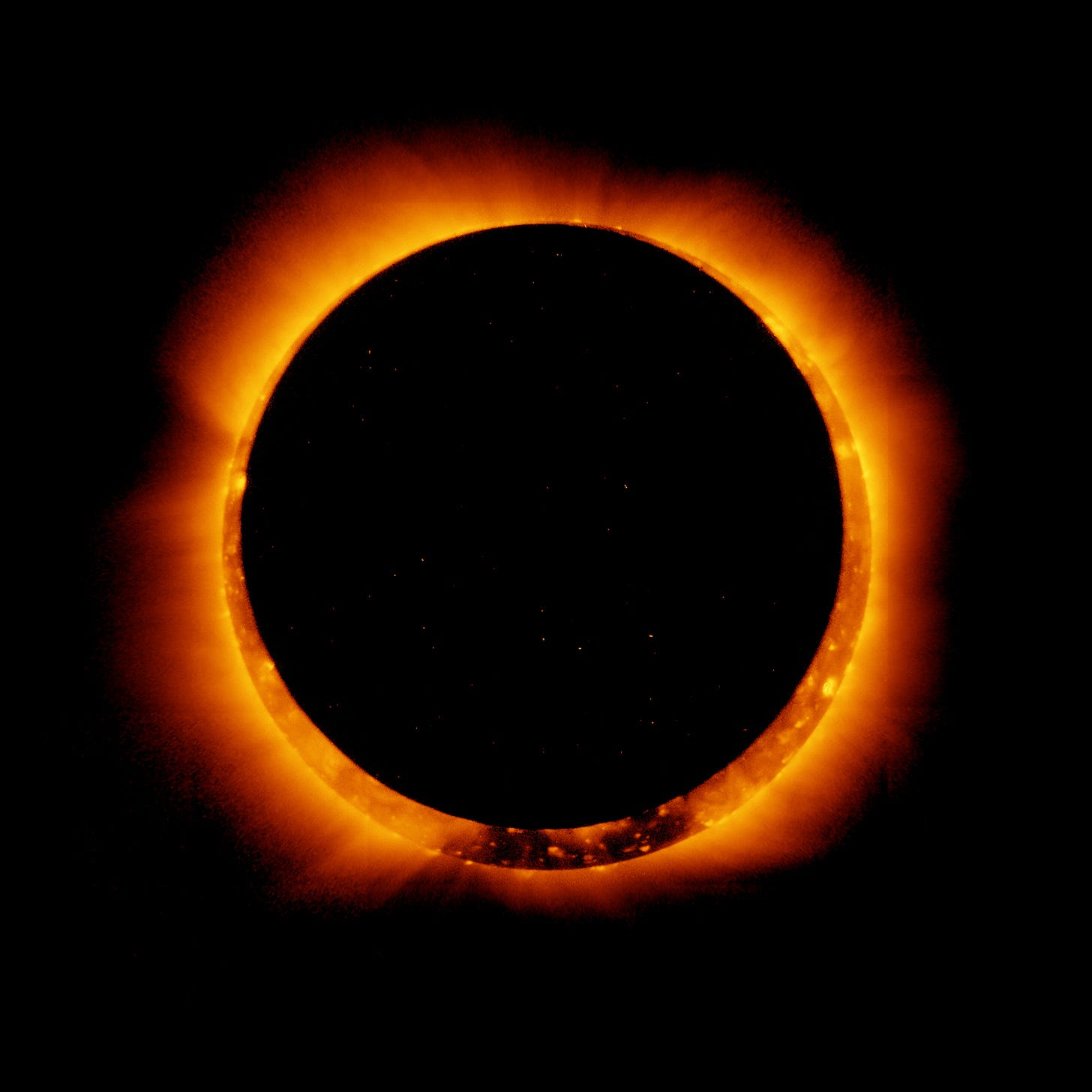⬤ eClips: Solar eclipse

⬤ Who: You.
⬤ What: An annular solar eclipse. A solar eclipse can only happen on a new moon. During an annular eclipse, the moon traverses between the sun and Earth, but it appears smaller than the sun, creating a “ring of fire” instead of completely obscuring it.
⬤ Where: North, Central, and South America. The full eclipse will be visible in Oregon, Nevada, Utah, New Mexico, and Texas, plus some parts of California, Idaho, Colorado, and Arizona. A partial eclipse will be visible in the rest of the contiguous U.S.
⬤ When: Saturday, Oct. 14, starting just after 8 a.m. PDT and ending at 10:39 a.m. PDT.
⬤ Why: To marvel at a rare and incredible miracle, what some call a “cosmic coincidence.”
⬤ How: Use eclipse glasses, safe solar viewers, or an indirect viewing method. Don’t look directly at the sun or use regular sunglasses. To find eclipse glasses, check your local library or big-box retailers, such as Home Depot, Lowe’s, and Walmart.
Happy Friday the 13th. The moon is eclipsing the sun and our daylight is diminishing — a time of shadow and night, a time to slow down • record and explore your dreams • read poetry by candlelight • wonder about goblins and ghosts • do the Time Warp • visit an ancient tree • press the season’s final flowers and fallen leaves • and meditate or listen to music while holding a stone.
